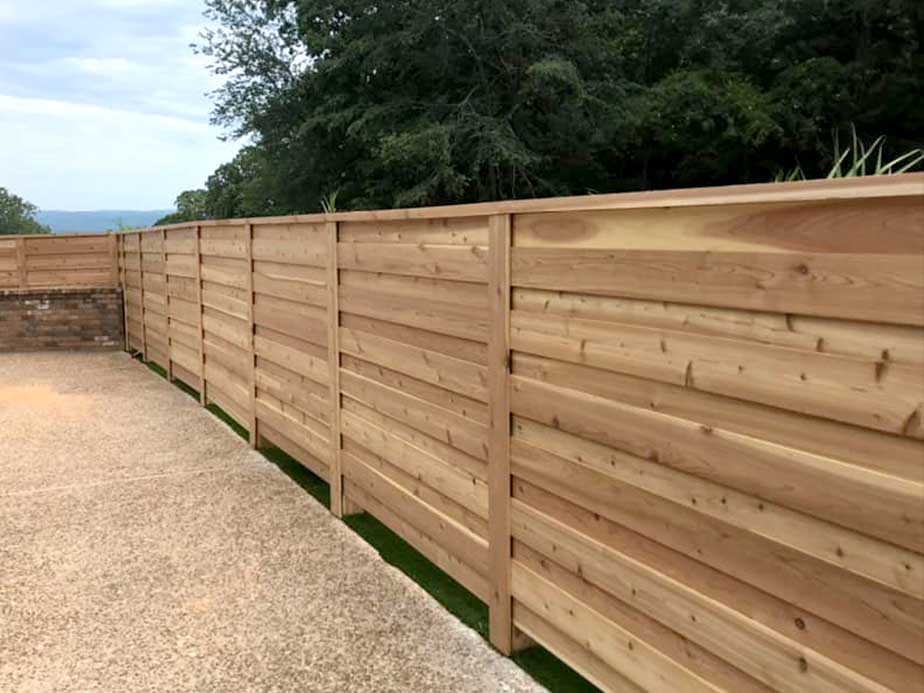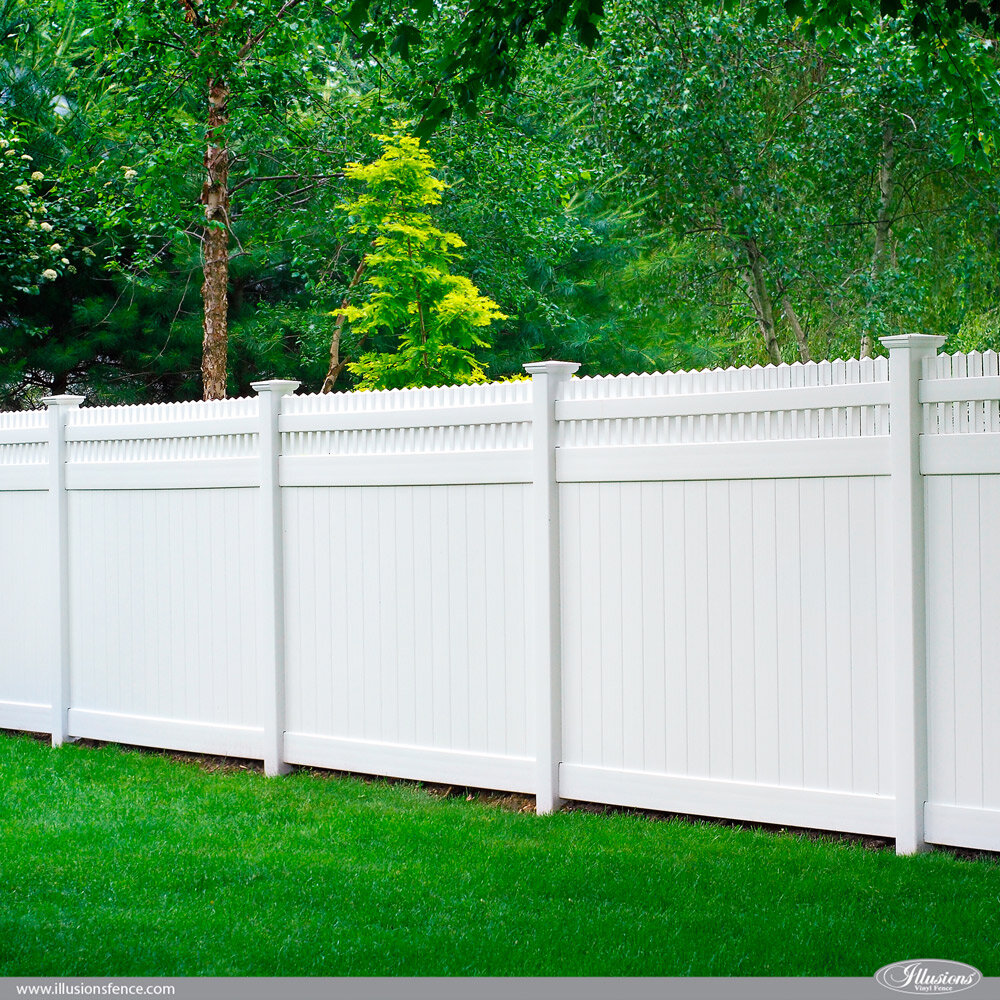All Categories
Featured
Installing a fencing on irregular or sloped terrain may feel like an intricate job, but with the appropriate methods, it's totally feasible to accomplish an attractive and practical outcome. Whether you're taking care of a moderate incline or a high slope, there are different installment methods to fit your needs. Here's every little thing you need to find out about setting up a fence on sloped terrain.
Difficulties of Mounting a Fencing on Sloped Terrain. Sloped or irregular surface can create some obstacles throughout fence setup, particularly when it involves ensuring the fencing stays degree and secure. The primary concern is making sure that the fencing does not look misaligned or come to be unsteady with time. An effectively mounted fencing on sloped land requires the ideal method to preserve both structural integrity and visual allure. Without cautious consideration, an incorrectly installed fence might bring about uneven panels, sagging, or also damages from wind or climate problems.
![]()
Finest Fence Techniques for Sloped Surface. When it comes to sloped terrain, two primary installment approaches are typically utilized: the action technique and the rack technique.
In this layout, each area of the fence is "tipped" to adhere to the surface's incline. The specific panels are positioned at various elevations to match the slope of the land, developing a stair-step impact across the size of the fence.
The step setup technique works well with products such as steel, vinyl, and timber, and it's a reasonably uncomplicated installment procedure. Nevertheless, it may leave spaces at the end of the fence some areas, depending upon the dimension of the incline.
Rack Installment Method For steeper inclines, a racked setup may be the far better option. This technique permits the fence panels to follow the natural incline of the land without tipping. In a racked installation, the panels are mounted in a continuous line, however they are adapted to accommodate the slope. This offers a smoother, much more seamless appearance compared to the tipped layout.
A racked setup ensures that the fencing keeps a constant elevation throughout its length while still adjusting to the incline. This technique is especially fit for chain-link or wrought iron fences, yet can additionally work well with wood or plastic fences that are versatile sufficient to change to the terrain.
Picking the Right Fence Product for Sloped Land. The selection of product plays a significant function in exactly how well the fence will carry out on unequal ground. Some materials are more adaptable to sloped terrain than others, so it's essential to choose intelligently.
Wood Fencing: Wood is a versatile material and works well for both stepped and racked installations. It can be personalized to fit any type of incline, though it requires normal upkeep to stop decay, specifically on irregular terrain where wetness build-up can be an issue.
Plastic Secure fencing: Plastic fences are resilient, low-maintenance, and appropriate for both tipped and racked installations. Since vinyl is a stiff material, it might not be as adaptable to high slopes, however it still supplies a smooth, continuous line when mounted correctly.
Steel Fence (Wrought or chain-link Iron): Steel fencings like chain-link or functioned iron are optimal for sloped terrain because they can be gotten used to comply with the land's natural slope. Chain-link is especially flexible and can be mounted in such a way that enables the fencing to adhere to the terrain's incline without creating spaces.
Compound Fence: Composite fences, made from a mix of wood fibers and plastic, are additionally a great option for sloped areas. These fences are strong, weather-resistant, and can be tailored for different types of surface.
How to Prepare for Installment. Prior to starting a fence setup on irregular surface, it's necessary to prepare the property properly. Here are a few actions to consider:
Assess the Incline: Begin by measuring the slope of the land. Use a level or a gauging tape to identify the slope's intensity. This will certainly assist you select the suitable setup method and products.
Clear the Area: Remove any kind of barriers such as rocks, trees, or shrubs from the location where the fence will certainly be mounted. This will guarantee smooth installation and prevent damage to the fence or the surrounding landscape.
Inspect Local Regulations: Make Sure that you are conscious of any regional building codes or policies for fencing installments. Some areas have specific rules regarding the elevation of fencings, setback requirements, or the kinds of materials permitted.
Select the Right Fence Type: Based upon your slope and the appearance you want, choose the right materials and setup technique. Wood, plastic, and metal all have their benefits, however you need to select the one that fits your particular surface and visual goals.
![]()
Expert Installment vs. Do It Yourself. While it is possible to set up a fence on sloped or irregular surface yourself, it might be tough, particularly for steep slopes or bigger locations. Hiring an expert fence installer can make certain that the fence is properly straightened, steady, and durable. Experts additionally have the experience to analyze the land, make use of the proper setup approaches, and ensure that your fencing meets neighborhood building regulations.
Verdict. Installing a fence on sloped or uneven surface is certainly feasible with the right tools, techniques, and products. Whether you decide for a step or racked installation, or pick one of the most suitable fencing material, making sure that the fence follows the shapes of the land while remaining stable is crucial. Taking the time to assess your building, choose the ideal products, and potentially employing an expert can result in a perfectly set up fence that adds both personal privacy and aesthetic attract your residential property.
Difficulties of Mounting a Fencing on Sloped Terrain. Sloped or irregular surface can create some obstacles throughout fence setup, particularly when it involves ensuring the fencing stays degree and secure. The primary concern is making sure that the fencing does not look misaligned or come to be unsteady with time. An effectively mounted fencing on sloped land requires the ideal method to preserve both structural integrity and visual allure. Without cautious consideration, an incorrectly installed fence might bring about uneven panels, sagging, or also damages from wind or climate problems.

Finest Fence Techniques for Sloped Surface. When it comes to sloped terrain, two primary installment approaches are typically utilized: the action technique and the rack technique.
In this layout, each area of the fence is "tipped" to adhere to the surface's incline. The specific panels are positioned at various elevations to match the slope of the land, developing a stair-step impact across the size of the fence.
The step setup technique works well with products such as steel, vinyl, and timber, and it's a reasonably uncomplicated installment procedure. Nevertheless, it may leave spaces at the end of the fence some areas, depending upon the dimension of the incline.
Rack Installment Method For steeper inclines, a racked setup may be the far better option. This technique permits the fence panels to follow the natural incline of the land without tipping. In a racked installation, the panels are mounted in a continuous line, however they are adapted to accommodate the slope. This offers a smoother, much more seamless appearance compared to the tipped layout.
A racked setup ensures that the fencing keeps a constant elevation throughout its length while still adjusting to the incline. This technique is especially fit for chain-link or wrought iron fences, yet can additionally work well with wood or plastic fences that are versatile sufficient to change to the terrain.
Picking the Right Fence Product for Sloped Land. The selection of product plays a significant function in exactly how well the fence will carry out on unequal ground. Some materials are more adaptable to sloped terrain than others, so it's essential to choose intelligently.
Wood Fencing: Wood is a versatile material and works well for both stepped and racked installations. It can be personalized to fit any type of incline, though it requires normal upkeep to stop decay, specifically on irregular terrain where wetness build-up can be an issue.
Plastic Secure fencing: Plastic fences are resilient, low-maintenance, and appropriate for both tipped and racked installations. Since vinyl is a stiff material, it might not be as adaptable to high slopes, however it still supplies a smooth, continuous line when mounted correctly.
Steel Fence (Wrought or chain-link Iron): Steel fencings like chain-link or functioned iron are optimal for sloped terrain because they can be gotten used to comply with the land's natural slope. Chain-link is especially flexible and can be mounted in such a way that enables the fencing to adhere to the terrain's incline without creating spaces.
Compound Fence: Composite fences, made from a mix of wood fibers and plastic, are additionally a great option for sloped areas. These fences are strong, weather-resistant, and can be tailored for different types of surface.
How to Prepare for Installment. Prior to starting a fence setup on irregular surface, it's necessary to prepare the property properly. Here are a few actions to consider:
Assess the Incline: Begin by measuring the slope of the land. Use a level or a gauging tape to identify the slope's intensity. This will certainly assist you select the suitable setup method and products.
Clear the Area: Remove any kind of barriers such as rocks, trees, or shrubs from the location where the fence will certainly be mounted. This will guarantee smooth installation and prevent damage to the fence or the surrounding landscape.
Inspect Local Regulations: Make Sure that you are conscious of any regional building codes or policies for fencing installments. Some areas have specific rules regarding the elevation of fencings, setback requirements, or the kinds of materials permitted.
Select the Right Fence Type: Based upon your slope and the appearance you want, choose the right materials and setup technique. Wood, plastic, and metal all have their benefits, however you need to select the one that fits your particular surface and visual goals.

Expert Installment vs. Do It Yourself. While it is possible to set up a fence on sloped or irregular surface yourself, it might be tough, particularly for steep slopes or bigger locations. Hiring an expert fence installer can make certain that the fence is properly straightened, steady, and durable. Experts additionally have the experience to analyze the land, make use of the proper setup approaches, and ensure that your fencing meets neighborhood building regulations.
Verdict. Installing a fence on sloped or uneven surface is certainly feasible with the right tools, techniques, and products. Whether you decide for a step or racked installation, or pick one of the most suitable fencing material, making sure that the fence follows the shapes of the land while remaining stable is crucial. Taking the time to assess your building, choose the ideal products, and potentially employing an expert can result in a perfectly set up fence that adds both personal privacy and aesthetic attract your residential property.
Latest Posts
Discover Trusted Vehicle Service in St. Louis, MO – Keep Your Car Running Smoothly
Published May 10, 25
1 min read
Explore Your LASIK Evaluation Near Me at the Eye Center South
Published May 10, 25
1 min read
Visit Strathmere’s Seaside Haven: Relax, Savor, and Stay at Deauville Inn
Published May 10, 25
2 min read
More
Latest Posts
Discover Trusted Vehicle Service in St. Louis, MO – Keep Your Car Running Smoothly
Published May 10, 25
1 min read
Explore Your LASIK Evaluation Near Me at the Eye Center South
Published May 10, 25
1 min read
Visit Strathmere’s Seaside Haven: Relax, Savor, and Stay at Deauville Inn
Published May 10, 25
2 min read